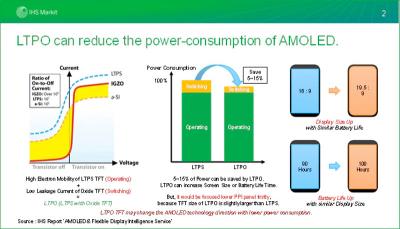Samsung Display has recently announced two design wins for its smartphone LTPO AMOLED displays - the Oppo Find X3 series and the OnePlus 9 Pro. Both adopt the same 6.7-inch 1440x3216 120Hz HDR10+ (1,300 nits peak) LTPO AMOLED display.

Samsung also announced that in the past the company's priority was to improve the image quality and the design of its OLED displays. Moving forward, SDC will focus on lowering the power consumption of its OLED displays. SDC will do so by developing low-power materials and "optimizing power-efficient technologies".
These SDC LTPO AMOLED display features SDC's Adaptive Frequency technology which minimizes power consumption by automatically adjusting a display's refresh rate for the application being used at any given moment. So if you run a game on your phone, it will run at 120Hz, and if you read an e-mail it can drop down to 30hz or even lower. Samsung says that this can sharply reduce the power consumption - depends on your phone use pattern, of course.
Low-Temperature Polycrystalline Oxid, or LTPO, is an OLED display backplane technology first developed and adopted by Apple. LTPO combines both LTPS TFTs and Oxide TFTs (IGZO, Indium Gallium Zinc Oxide). LTPO is applicable for both OLED and LCD displays, actually, but this backplane technology is likely to be used exclusively in high-end OLED displays

In LTPO, the switching circuits are using LTPS while the driving TFTs will use IGZO materials. This could lead to a power saving of around 5-15% compared to the currently-used LTPS backplanes. The main drawback of LTPO, however, is that the IGZO TFTs are larger and so the display density may be compromised.

